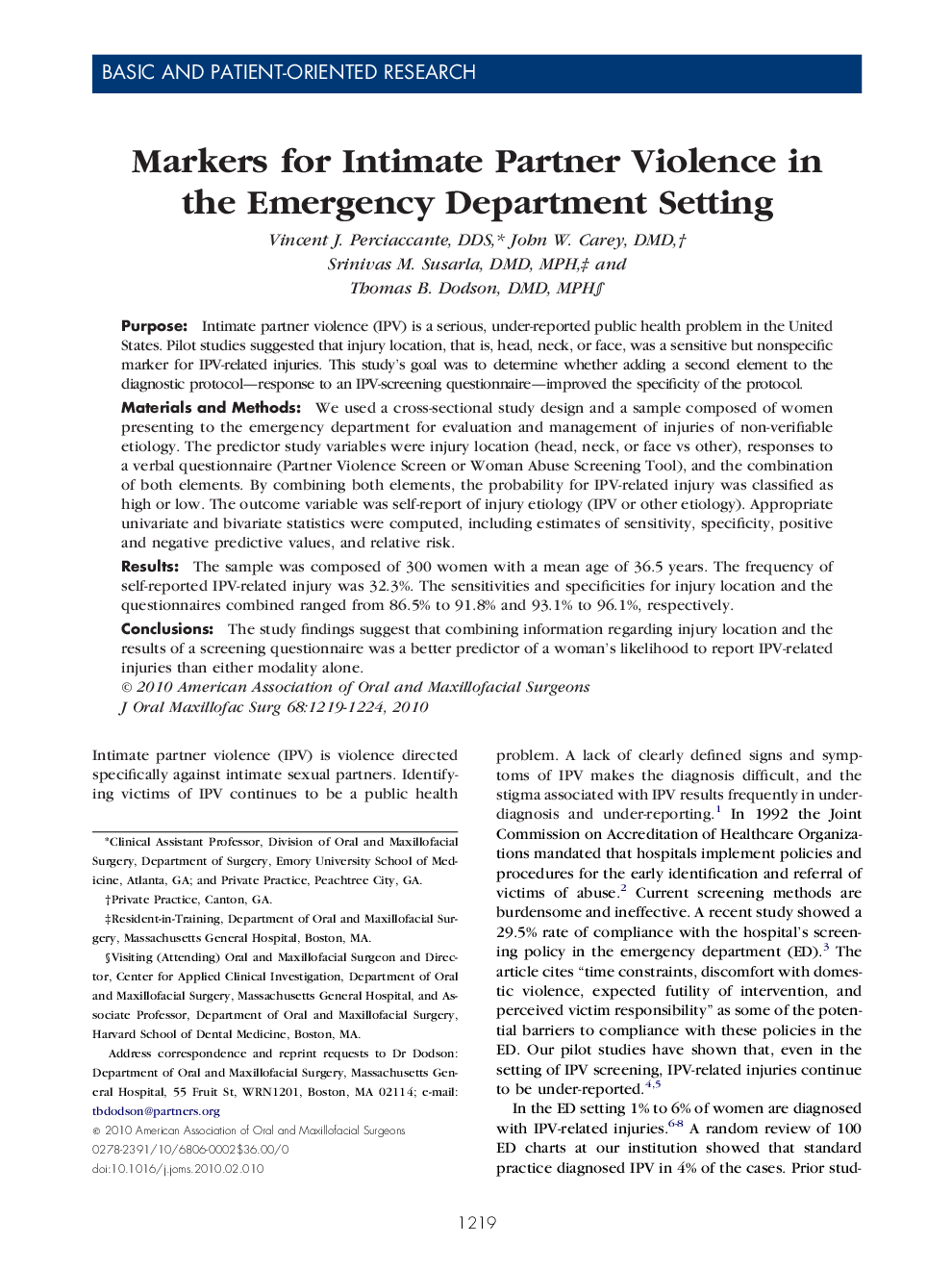| Article ID | Journal | Published Year | Pages | File Type |
|---|---|---|---|---|
| 3157114 | Journal of Oral and Maxillofacial Surgery | 2010 | 6 Pages |
PurposeIntimate partner violence (IPV) is a serious, under-reported public health problem in the United States. Pilot studies suggested that injury location, that is, head, neck, or face, was a sensitive but nonspecific marker for IPV-related injuries. This study's goal was to determine whether adding a second element to the diagnostic protocol—response to an IPV-screening questionnaire—improved the specificity of the protocol.Materials and MethodsWe used a cross-sectional study design and a sample composed of women presenting to the emergency department for evaluation and management of injuries of non-verifiable etiology. The predictor study variables were injury location (head, neck, or face vs other), responses to a verbal questionnaire (Partner Violence Screen or Woman Abuse Screening Tool), and the combination of both elements. By combining both elements, the probability for IPV-related injury was classified as high or low. The outcome variable was self-report of injury etiology (IPV or other etiology). Appropriate univariate and bivariate statistics were computed, including estimates of sensitivity, specificity, positive and negative predictive values, and relative risk.ResultsThe sample was composed of 300 women with a mean age of 36.5 years. The frequency of self-reported IPV-related injury was 32.3%. The sensitivities and specificities for injury location and the questionnaires combined ranged from 86.5% to 91.8% and 93.1% to 96.1%, respectively.ConclusionsThe study findings suggest that combining information regarding injury location and the results of a screening questionnaire was a better predictor of a woman's likelihood to report IPV-related injuries than either modality alone.
